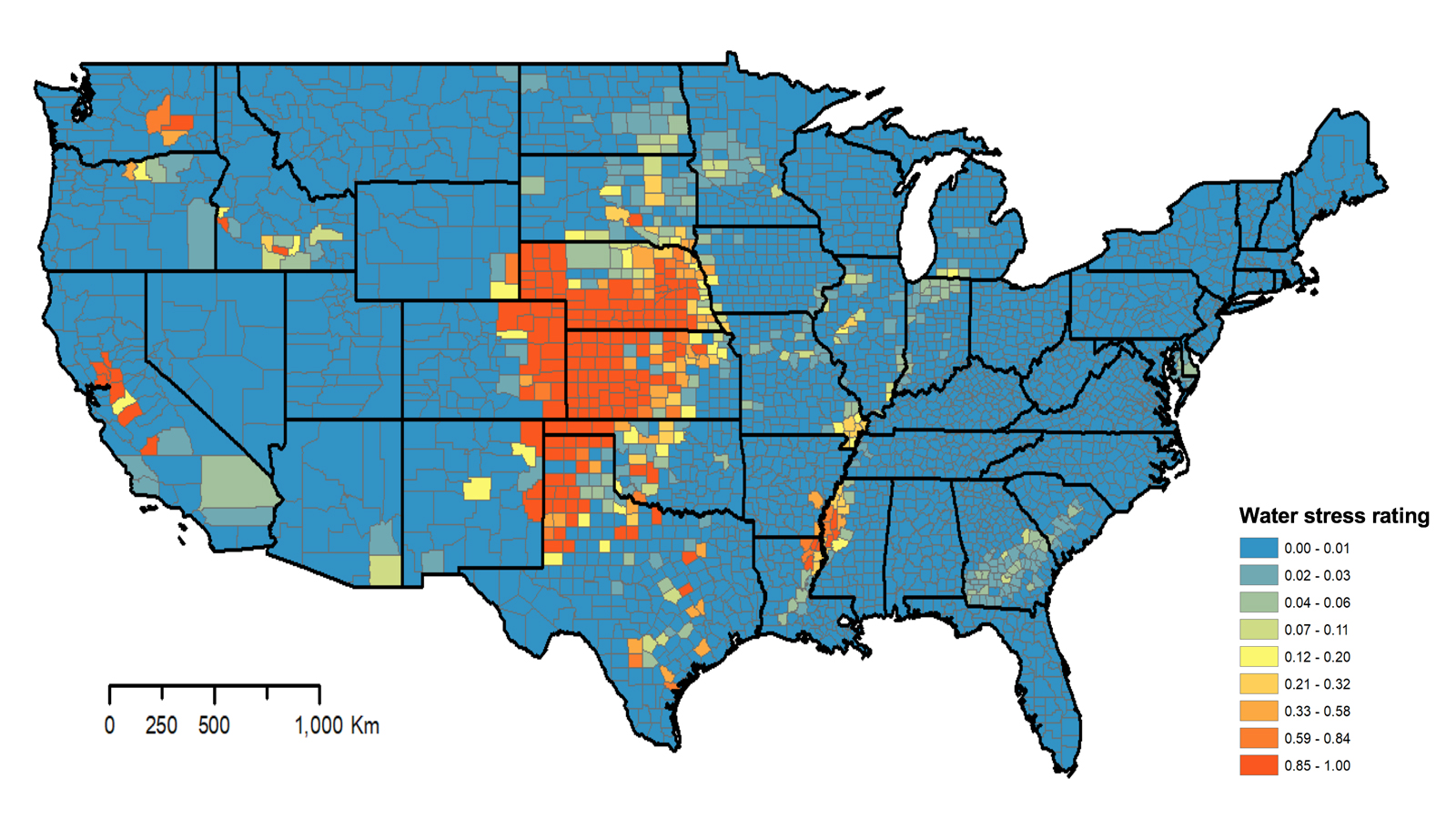Argonne releases updated computer model to help bioenergy developers conserve water

The U.S. Department of Energy’s Argonne National Laboratory recently released an updated version of an online computer model meant to help bioenergy developers preserve critical resources.
The model, called Water Analysis Tool for Energy Resources or WATER, has users from more than 35 U.S. states and can be found here: https://water.es.anl.gov/.
It provides an in-depth analysis of water consumption used in the development of bioenergy, allowing industry leaders to make better informed decisions about what types of feedstock – meaning the raw materials that bioenergy is made of, including soybeans, grasses, corn grain, corn stover, forest wood residues and algae – are most appropriate for use in water-limited areas.
“Water sustainability is becoming increasingly important when considering our energy future,” said Daniel Simmons, Assistant Secretary of the Office of Energy Efficiency and Renewable Energy, U.S. Department of Energy. “When evaluating the effects of bioenergy on water, it’s critical that we understand how much water might be consumed, as well as the potential impacts of that water consumption at a regional level. Tools like these keep us working toward meeting the national and global need for secure, affordable water.”
Argonne’s May Wu, principal environmental systems analyst, built the software with the help of three other researchers. The project was funded by the U.S. Department of Energy’s Bioenergy Technologies Office within the Office of Energy Efficiency and Renewable Energy.
“Competing demands for water create stress in many areas of the U.S., particularly in regions with limited annual freshwater resource inputs like some of the western states,” Wu said. “We wanted to know how increased biomass production would affect freshwater availability to non-bioenergy sectors in any given region – and what strategies would be helpful to reduce irrigation demand and alleviate water stress. Water conservation is already a high priority and will only grow more important in the coming years.”
WATER also can be used to help bioenergy developers decide where to build their biorefineries, she said.
This latest version of the software, WATER 4.0, is different from its predecessors in two critical ways. First, the new model indicates the amount of water available in different regions of the United States at the county level.
In an effort to add this important feature, Wu and her team calculated the annual freshwater available from rainfall, stream flow, and renewable groundwater and then compared this with irrigation water demand under future projected bioenergy production scenarios.
Second, the new model estimates the freshwater available for non-bioenergy sectors such as agriculture, power, municipal and other industries – in addition to ecosystem services after bioenergy feedstock water demand is met.
“When evaluating the effects of bioenergy on water, it’s critical that we understand how much water might be consumed, as well as the potential impacts of that water consumption at a regional level. Tools like these keep us working toward meeting the national and global need for secure, affordable water.”
Daniel Simmons, Assistant Secretary of the Office of Energy Efficiency and Renewable Energy, U.S. Department of Energy
WATER 4.0 also allows users to focus more acutely on different regions of the continental U.S. as each has a different availability of water.

The software was first launched in 2012 with a pathway-based platform that calculated the water footprint of a biofuel from the feedstock growing stage to the fuel production stage at the county, state, and regional level. It focused on several basic U.S. feedstock types, including conventional corn grain, soybean, corn stover and wheat straw.
A second version was released in 2014 that included new pathways of bioenergy production from perennial grasses, including switchgrass and miscanthus.
Water 3.0, released 2015, offered yet another new bioenergy production pathway, forest wood residue – including hardwood and softwood – and short rotation woody crops.
The Office of Energy Efficiency and Renewable Energy’s (EERE) mission is to accelerate the research, development, demonstration, and deployment of technologies and solutions to equitably transition America to net-zero greenhouse gas emissions economy-wide by no later than 2050, and ensure the clean energy economy benefits all Americans, creating good paying jobs for the American people — especially workers and communities impacted by the energy transition and those historically underserved by the energy system and overburdened by pollution.
Argonne National Laboratory seeks solutions to pressing national problems in science and technology by conducting leading-edge basic and applied research in virtually every scientific discipline. Argonne is managed by UChicago Argonne, LLC for the U.S. Department of Energy’s Office of Science.
The U.S. Department of Energy’s Office of Science is the single largest supporter of basic research in the physical sciences in the United States and is working to address some of the most pressing challenges of our time. For more information, visit https://energy.gov/science.